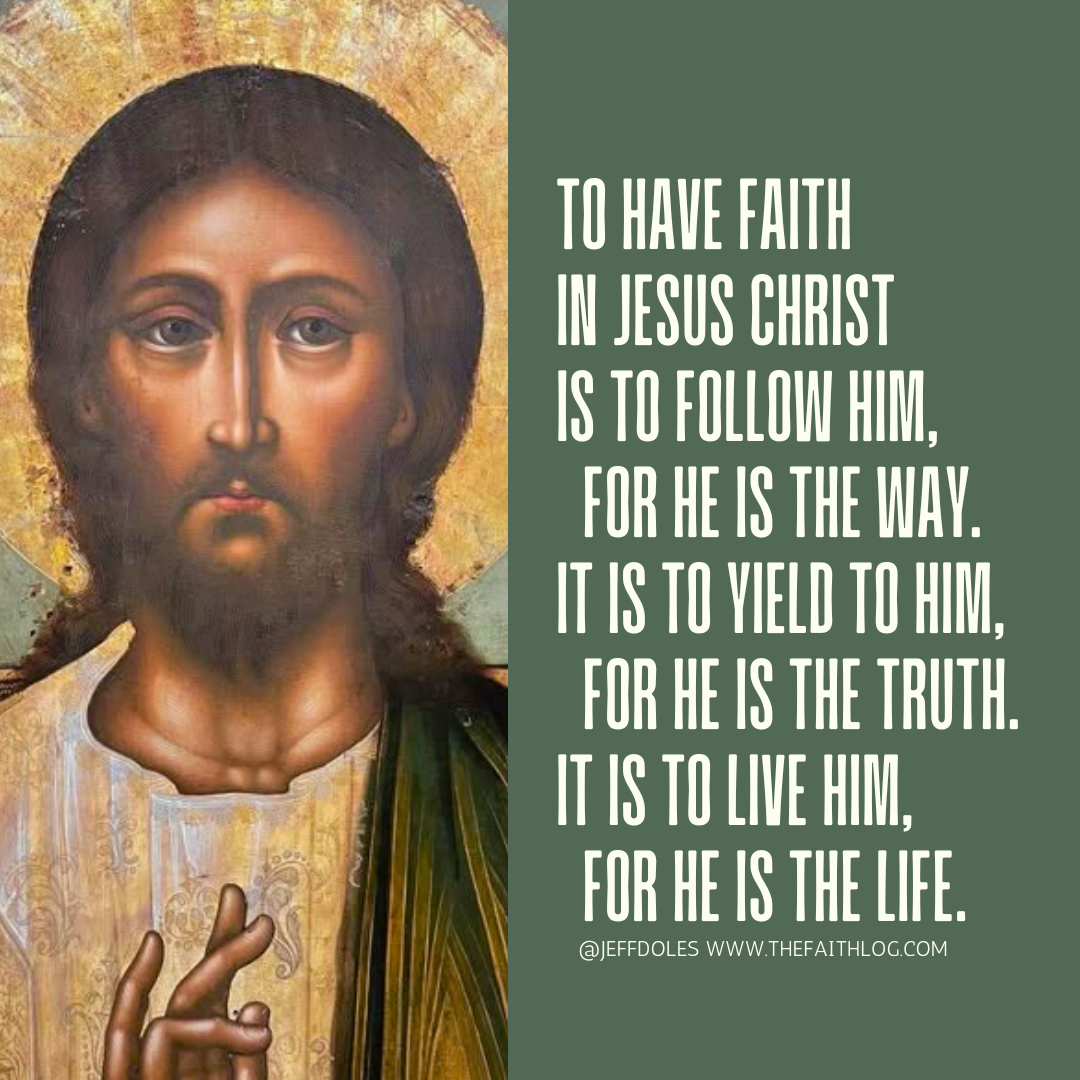To have faith in our Lord Jesus Christ is to trust him — to entrust ourselves to him — and so it is to follow him, to do as he teaches and obey as he commands. And what does he command but to love. Love for God, love for one another, love for our neighbor, and love even for our enemies. This is what faith looks like, for faith works through love.
“Love the Lord your God with all your heart and with all your soul and with all your mind.” This is the first and greatest commandment. And the second is like it: “Love your neighbor as yourself.” All the Law and the Prophets hang on these two commandments. (Matthew 22:37-40)
You have heard that it was said, “You shall lover your neighbor and hater your enemy.” But I say to you, love your enemies, bless those who curse you, do good to those who hate you, and pray for those who spitefully use you and persecute you, that you may be sons of your Father in heaven. (Matthew 5:43-45)
A new command I give you: Love one another. As I have loved you, so you must love one another. By this everyone will know that you are my disciples, if you love one another. (John 13:34-35)
If I speak in the tongues of men or of angels, but do not have love, I am only a resounding gong or a clanging cymbal. If I have the gift of prophecy and can fathom all mysteries and all knowledge, and if I have a faith that can move mountains, but do not have love, I am nothing. If I give all I possess to the poor and give over my body to hardship that I may boast, but do not have love, I gain nothing. Love is patient, love is kind. It does not envy, it does not boast, it is not proud. It does not dishonor others, it is not self-seeking, it is not easily angered, it keeps no record of wrongs. Love does not delight in evil but rejoices with the truth. It always protects, always trusts, always hopes, always perseveres. Love never fails. But where there are prophecies, they will cease; where there are tongues, they will be stilled; where there is knowledge, it will pass away. (1 Corinthians 13:1-8)
And now these three remain: faith, hope and love. But the greatest of these is love. (1 Corinthians 13:13)
The only thing that counts is faith expressing itself through love. (Galatians 5:6)
Dear friends, let us love one another, for love comes from God. Everyone who loves has been born of God and knows God. Whoever does not love does not know God, because God is love. (1 John 4:7-8)








